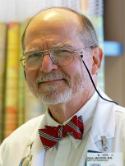Transcriptional profiling identifies the signaling axes of IGF and transforming growth factor-β as involved in the pathogenesis of osteosarcoma Journal Article
| Authors: | Yang, R.; Piperdi, S.; Zhang, Y.; Zhu, W.; Neophytou, N.; Hoang, B. H.; Mason, G.; Geller, D.; Dorfman, H.; Meyers, P. A.; Healey, J. H.; Phinney, D. G.; Gorlick, R. |
| Article Title: | Transcriptional profiling identifies the signaling axes of IGF and transforming growth factor-β as involved in the pathogenesis of osteosarcoma |
| Abstract: | Background: Osteosarcoma is the most common primary bone tumor in adolescents associated with skeletal development. The molecular pathogenesis of osteosarcoma has not been completely determined, although many molecular alterations have been found in human osteosarcomas and cell lines. Questions/purposes: We questioned whether (1) we could identify gene expression in osteosarcoma specimens that differs from normal osteoblasts and mesenchymal stem cells and (2) this would provide clues to the molecular pathogenesis of osteosarcoma? Methods: The whole-genome transcriptional profiles of osteosarcomas, including two primary biopsy specimens, two cell lines, two xenografts derived from patient specimens, and one from normal osteoblasts and from mesenchymal stem cells, respectively, were quantitatively measured using serial analysis of gene expression. A statistical enrichment was performed, which selects the common genes altered in each of the osteosarcomas compared with each of the normal counterparts independently. Results: Sixty (92%) of 65 total genes that were at least twofold downregulated in osteosarcoma compared with osteoblasts and mesenchymal stem cells, could be classified in four categories: (1) seven genes in the insulin–like growth factor (IGF) signaling axis, including three of the IGF-binding proteins (IGFBP) and three of the IGFBP-related proteins (IGFBPrP); (2) eight genes in the transforming growth factor-β (TGF-β)/bone morphogenetic protein (BMP) signaling cascade; (3) 39 genes encoding cytoskeleton and extracellular matrix proteins that are regulated by TGF-β/BMPs; and (4) six genes involved in cell cycle regulation, including tumor suppressors TP63 and p21. Conclusions: Based on these transcriptional profiles, a coordinated theme of clustered gene deregulation in osteosarcoma has emerged. Cell proliferation driven by the IGF axes during bone growth is unrestrained owing to downregulation of IGFBPs and cell cycle regulators. Tumor cells may be maintained in an undifferentiated state secondary to impaired TGF-β/BMP signaling. This well-preserved pattern suggests that the alterations in the signaling axes of IGF-1 and TGF-β, in concert with cell cycle regulators, may be an important pathogenic basis of osteosarcoma. Clinic Relevance: This study provides a possible molecular basis of pathogenesis of osteosarcoma. This may help to develop new therapeutic targets and strategy for this disease. Preclinical and subsequently clinical testing of inhibitors of the IGF-1 and TGF pathways would be warranted. © 2015, The Association of Bone and Joint Surgeons®. |
| Keywords: | osteosarcoma; signal transduction; somatomedin; adolescent; human cell; nonhuman; cell proliferation; protein analysis; animal cell; mouse; gene expression; bone morphogenetic protein; transforming growth factor beta; scleroprotein; extracellular matrix; mesenchymal stem cell; thrombospondin 1; cell cycle regulation; somatomedin binding protein; vimentin; molecular pathology; serial analysis of gene expression; bone growth; caveolin 1; human; male; female; priority journal; article; collagen type 6; inhibin b |
| Journal Title: | Clinical Orthopaedics and Related Research |
| Volume: | 474 |
| Issue: | 1 |
| ISSN: | 0009-921X |
| Publisher: | Springer |
| Date Published: | 2016-01-01 |
| Start Page: | 178 |
| End Page: | 189 |
| Language: | English |
| DOI: | 10.1007/s11999-015-4578-1 |
| PROVIDER: | scopus |
| PMCID: | PMC4686509 |
| PUBMED: | 26463566 |
| DOI/URL: | |
| Notes: | Article -- Export Date: 3 February 2016 -- Source: Scopus |
Altmetric
Citation Impact
BMJ Impact Analytics
Related MSK Work





